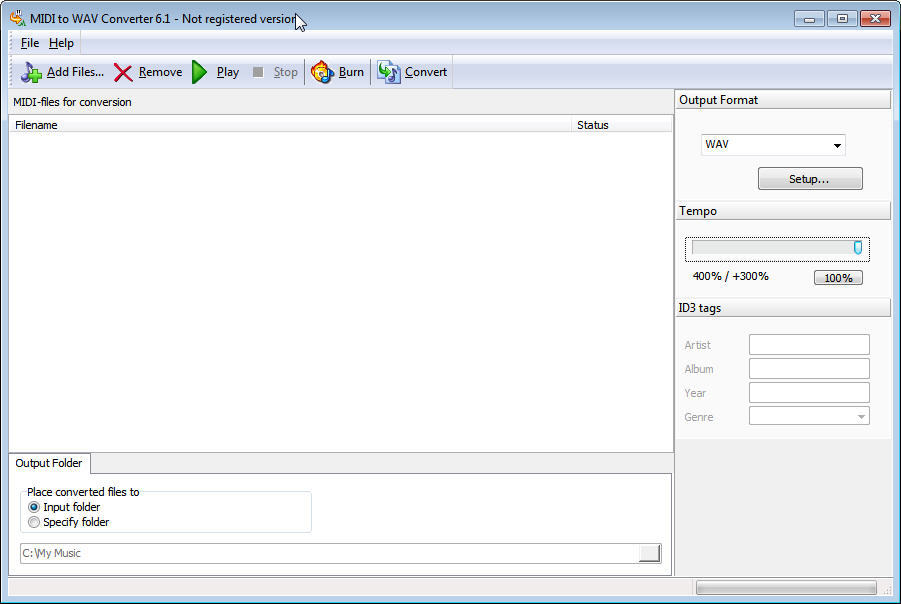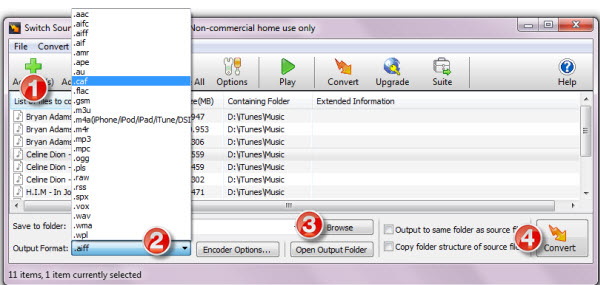

When you are done, you may export your job as a MIDI file: click the “File” menu, then click the “Export Annotation Layer” item, then in the dialog box, choose the file type “MIDI Files (*.mid)”. You may play/pause as you want, to hear both the original audio file, with the notes playing above it, as MIDI notes (it uses an embedded DSSI plug‑in as the MIDI synthesizer, so you don't have to bother to install and configure one). Draw horizontal lines above it, like in a piano‑roll editor. Take a look especially at what's red in the pitch spectrogram… this is typically the notes of the melody. The mouse cursor now should look like a cross, which will allow you to draw lines, just like in a piano‑roll view. Now click the “Layer” menu, and then click the “Add New Notes Layer” item. It will be useful, as you will see later. On the left of the pitch spectrogram, you can see a keyboard‑like ruler. This view shows the pitch (something close to classical spectrogram). You should see a new view below the waveform view (which, the latter, you can close if you wish). It allows you to produce better and more natural sounds as it converts midi to wav, MIDI to MP3. You should see a classical waveform graph appearing.Ĭlick the “Pane” menu, then click the “Add Melodic Range Spectrogram” item, then select “All Channels Mixed” sub‑menu (that's typically what you want, but you may work on separated left and right channels). MIDI to WAV Converter is the easiest and fastest way to do it. Open Sonic Visualizer (use the Dash for this). Install Sonic Visualizer ( sonic-visualiser from Synaptic or the Software Center). Elmedia Player also supports WAV files.Indirectly, Sonic Visualizer is able to at least help, but won't do it automatically, and you will have to be patient with the job it will requires. UltraMixer is a cross-operating-system, software program for deejaying on which WAV files work well. Alternatively, programs such as iTunes, VLC media player, and QuickTime can also be used to open and play WAV files.ĭue to a WAV file’s higher, uncompressed quality, they are suitable for importing into music editing, production, and manipulation programs.

The default player for opening WAV files is Windows Media Player. Their quality, however, does surpass that of M4A and MP3.

WAV files are much larger than M4A and MP3 files, making them less practical for consumer use on portable players. WAV is the result of IBM and Windows iterating a Resource Interchange File Format (RIFF). Waveform Audio (WAV) is the most-popular digital-audio format for uncompressed audio files.


 0 kommentar(er)
0 kommentar(er)
